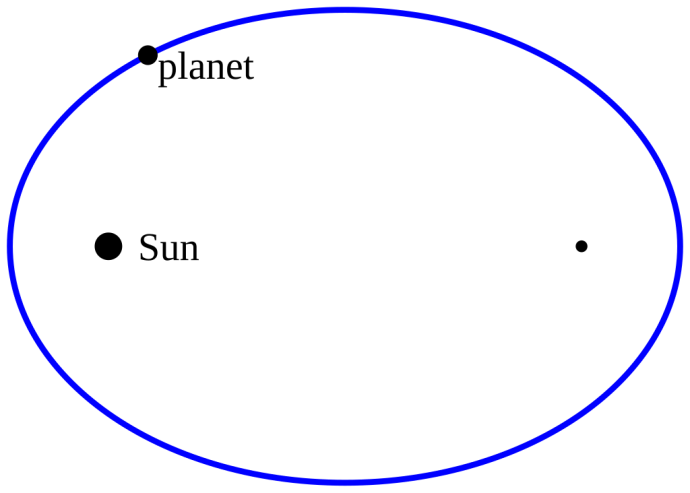An orbit is the path an object in space travels around another. Lots of objects in the Universe orbit others. The Moon orbits the Earth. The Earth orbits the Sun. Did you know the Sun orbits the centre of the Milky Way?
An orbit is a curved path. A lot of orbits are shaped like a circle. Some orbits are more oval shaped. We call these elliptical orbits.
- Why do orbits happen?
Orbits happen because of gravity and something called momentum. The Moon's momentum wants to carry it off into space in a straight line. The Earth's gravity pulls the Moon back towards the Earth. The constant tug of war between these forces creates a curved path. The Moon orbits the Earth because the gravity and momentum balance out.
The gravity and momentum must balance out to create an orbit. If the momentum is too large, the object speeds past. If the momentum is too small, the gravity pulls it down, and it crashes.
Want to know how spacecraft and satellites orbit the Earth? Have a look at this demonstration.
- Elliptical Orbits
You might think that the Earth orbits the Sun in a perfect circle. But actually it's more like an oval. We call the shape of the Earth's orbit elliptical. This means it is shaped like an ellipse. An ellipse is a circle which has been squashed or flattened a bit.
Image CreditThis work by Rubber Duck is licensed under Creative Commons Attribution Share Alike 4.0 International
CreditThis work by Rubber Duck is licensed under Creative Commons Attribution Share Alike 4.0 InternationalAn elliptical orbit All 8 planets in our Solar System travel around the Sun in elliptical orbits. Not all ellipses are the same. The 'eccentricity' of an ellipse tells us how flattened (or how elliptical) it is. The more flattened an ellipse is, the closer the eccentricity is to 1. A perfectly circular obit has an eccentricity of 0, which is not at all flattened. So, all ellipses have an eccentricity between 0 and 1.
Earth's orbit has an eccentricity of 0.0167, which is very close to 0. This is why it's easy to mistake it for a perfect circle. Mercury, with an eccentricity of 0.2056, is the planet with the most elliptical orbit. (Use the electric orrery to view orbits of the planets in our Solar System.)
An ellipse has 2 focus points or foci. At any point in its orbit, a planet's total distance from these 2 focus points stays the same. An ellipse also has 2 lines of symmetry. The longer line is the major axis. The shorter line is the minor axis. Half of the major axis is the semi-major axis. Likewise, half of the minor axis is the semi-minor axis.
Image CreditThis work by Sae1962 is licensed under Creative Commons Attribution Share Alike 4.0 International
CreditThis work by Sae1962 is licensed under Creative Commons Attribution Share Alike 4.0 InternationalAxes of an ellipse
